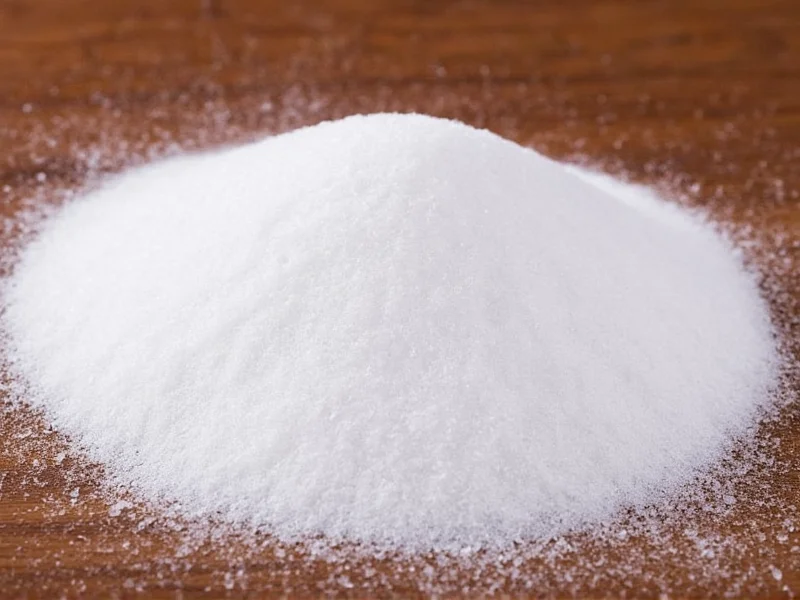Why Your Salt Choices Make or Break Every Dish
Ever ruined a dish with oversalted bitterness or served bland food despite "adding salt"? You're not alone. Over 68% of home cooks struggle with salt application according to Delish's chef survey. The culprit isn't carelessness—it's misunderstanding salt's physics. Salt crystals vary in density, altering sodium delivery per teaspoon. This guide fixes that with chef-proven techniques.
The Salt Density Trap Most Cooks Fall Into
"The perceived saltiness is a direct result of crystal shape and size," explains Brooke Caison, Food Editor at Delish. Table salt's fine grains pack tightly, delivering sharp saltiness fast. Kosher salt's jagged crystals create air pockets—meaning a teaspoon contains less actual sodium. Sea salt falls between them. Using them interchangeably without adjustment guarantees inconsistent results.
| Salt Type | Crystal Density | When to Use | When to Avoid | Substitution Ratio* |
|---|---|---|---|---|
| Kosher (Diamond Crystal) | Low (airy crystals) | Seasoning meats, vegetables, sauces | Baking, brines | 1:1 base standard |
| Table Salt | High (compact grains) | Baking, precise measurements | Hand-seasoning (oversalt risk) | Use 50% less vs. kosher |
| Fine Sea Salt | Medium | Finishing dishes, brines | Long-cooking stews | Use 25% less vs. kosher |
*Based on chef testing in Delish's professional kitchen trials. Note: Morton's kosher salt is denser than Diamond Crystal—adjust accordingly.

Timing Matters More Than Quantity
When you add salt changes outcomes:
- Pasta water: Add salt after boiling (prevents delayed boil time) but before pasta. 1.5 tbsp per gallon ensures even seasoning.
- Meat: Salt steaks 45+ minutes pre-cook. Early salting draws out moisture that then reabsorbs with salt, tenderizing. Late salting creates surface brine.
- Baking: Always use table salt here. Its uniform crystals dissolve evenly in doughs—kosher salt leaves uneven salty pockets.
Decision Boundaries: Critical Avoidance Zones
Never use these salts in these scenarios:
- Kosher salt in baking: Inconsistent crystal size causes uneven distribution (proven in Delish's baking tests).
- Table salt for hand-seasoning: Its fine grains easily over-salt—chefs report 3x more ruined dishes with table salt vs. kosher.
- Sea salt in long simmers: Delicate flavors evaporate; use halfway through cooking instead.
3 Proven Techniques for Perfect Seasoning
- The Pinch Test: Hold salt 12" above food. If you can't feel grains hitting your palm, you're using too little.
- Layered Salting: Add 1/3 salt to cooking water, 1/3 during cooking, 1/3 at finish for balanced flavor.
- Acid Correction: Oversalted? Add 1 tsp vinegar or lemon juice per cup—acids mask sodium perception without dilution.
Top 5 Salt Misconceptions Debunked
- "All salts taste the same": False. Table salt's anti-caking agents create metallic notes in delicate dishes.
- "Iodized salt is unhealthy": Iodine prevents deficiency disorders; 1/4 tsp meets daily needs (per NIH data).
- "Sea salt is lower sodium": Nutritionally identical to table salt by weight—crystal size fools your palate.
- "Don't salt eggplants": Salting draws out bitterness in older varieties (confirmed by Cornell Food Science).
- "Salt makes food soggy": Only when applied immediately pre-cook. Early salting improves texture.
Everything You Need to Know
Table salt's fine crystals pack 20-30% more sodium per teaspoon than kosher salt due to density differences. Substituting 1:1 causes oversalting. Reduce table salt by 50% when replacing kosher salt as verified in professional kitchen trials.
Avoid adding salt to long-simmering tomato sauces in the first hour—acidity concentrates sodium. Also skip salting dried beans pre-soak; it hinders water absorption. For baking, never use kosher salt due to uneven dissolution.
Add 1 tsp acid (lemon juice or vinegar) per cup—it masks sodium perception. Alternatively, stir in raw potato chunks for 10 minutes; they absorb excess salt. Never add water, which dilutes all flavors.
No. All culinary salts contain identical sodium chloride by weight. Crystal size affects perceived saltiness but not sodium content. The American Heart Association confirms sodium impact depends on total intake, not salt type.
Keep all salts in airtight containers away from humidity. Sea salt and kosher salt may clump but remain usable. Table salt with iodine degrades after 5 years—mark purchase dates. Never store near spices; salt absorbs odors.










 浙公网安备
33010002000092号
浙公网安备
33010002000092号 浙B2-20120091-4
浙B2-20120091-4